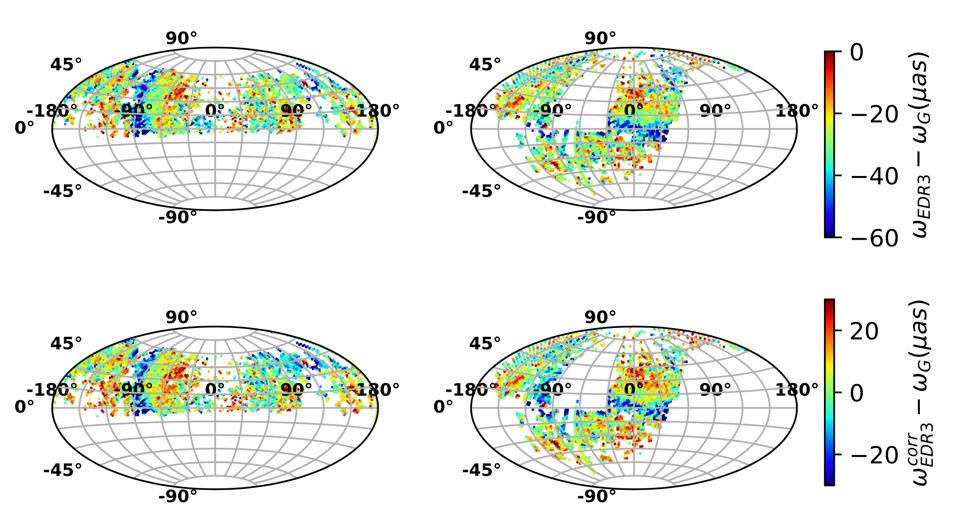Gaia EDR3 have released astrometric and photometric data for over 1.8 billion sources. Among of them, 1.468 billion sources have full astrometric data, including position, parallax, and proper motions. The data set of Gaia EDR3 is widely used in the fields of the stellar and Galactic astrophysics.
In Gaia EDR3, the typical uncertainties of parallaxes are 0.03–1.4 mas for stars with 15 < G < 21 mag. The systematic parallax errors are inevitable because of the imperfections in the instruments and data processing, which will produce large systematic distance errors especially for more distant stars.
Thus, researchers studied the zero-point offset of Gaia Early Data Release 3 (EDR3) parallaxes based on a sample of 0.3 million giant stars built from the LAMOST data with distance accuracy better than 8.5%. The official parallax zero-point corrections largely reduce the global offset in the Gaia EDR3 parallaxes: the global parallax offsets are −27.9 μas and −26.5 μas (before correction) and +2.6 μas and +2.9 μas (after correction) for the five- and six-parameter solutions, respectively. The bias of the raw parallax measurements is significantly dependent on the G magnitudes, spectral colors, and positions of stars. The official parallax zero-point corrections could reduce parallax bias patterns with G magnitudes, while could not fully account the patterns in the spaces of the spectral colors and positions. In the current paper, a spatially dependent parallax zero-point correction model for Gaia EDR3 five-parameter solution in the LAMOST footprint is first provided with the advantage of huge number of stars in our sample.

Figure: The parallax zero-point correction distributions in equatorial coordinate (left panels) and Galactic coordinate (right panels).
The paper can be accessed at:
https://iopscience.iop.org/article/10.3847/1538-3881/ac4dec
 目的地搜索
目的地搜索